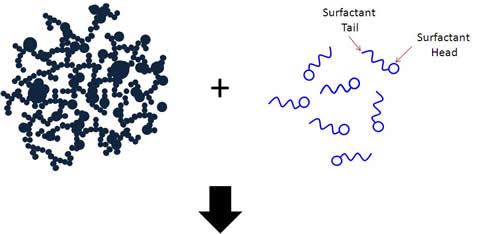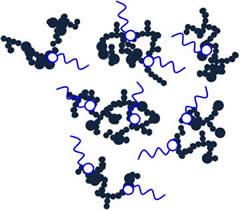|
Postdoctoral Associate Office: 226 Mason Lab Phone: (203) 436-4059 |
Since December 2012, Postdoctoral Associate, Yale University, School of Engineering & Applied Science, Department of Chemical Engineering 2011, PhD. in Chemical Engineering, Ecole Polytechnique de Montreal |
|
My current research involves studying basic structure-property relationships in colloidal suspensions. In particular, I investigate the dynamics of surfactant stabilized lubricating oils at elevated temperatures. Lubricating oils are being used to cool down the engine, control rust, deposits, wear and corrosion and eventually improve the performnace of engine. Soot, an impure form of carbon particles, is a by-product resulted from the incomplete combustion of hydrocarbons that can form agglomerates in engine oil and lower the lubricating efficiency. Various surfactants have been formulated to facilitate dispersing soot particles into the oil. The performance of these surfactants can be easily influenced by different parameters such as surface activity, surfactant/particles interactions, operating temperture, concentration of particles/surfactant and etc. In this investigation, the efficacy of various dispersants will be anaylzed based on the surface coverage of particles by employing adsorption isotherms. Rheological behavior of these suspensions at various conditions (e.g. temperature, surface coverage, etc) can provide an insight into thier dynamics in the engine and result into the design and optimization of high performance dispersants for lubricating oils.
|
|
Fig. 1 Aggregate breakdown and steric stabilization of carbon black particles upon the addition of surfactant |
|
Characterization of flow-induced structures in model carbon nanotube suspensions, PhD Thesis, Département de génie chimique, École Polytechnique de Montréal, 2011. Due to their high specific surface area, high electric current density, thermal stability and excellent mechanical properties, carbon nanotubes (CNTs) are being used to reinforce physical properties of polymer matrices. The macroscopic properties of suspensions are inherited from their structure which can be easily influenced by various parameters such as processing condition, the particle-fluid and particle-particle interactions, particle flexibility and etc. Since carbon nanotube suspensions are very opaque, the application of light scattering techniques in structure characterization is very challenging. In this research,the flow-induced evolution of structure of a model carbon nanotube suspension was studied by employing a set of rheological methods, scaling and fractal theories and a structural thixotropic model. This was a part of a large scale project, performed in collaboration with a multi-disciplinary team of academic and industrial researchers to develop novel electrically conductive nano-composites for aircraft applications.
|
|
|
|
|
|
|


